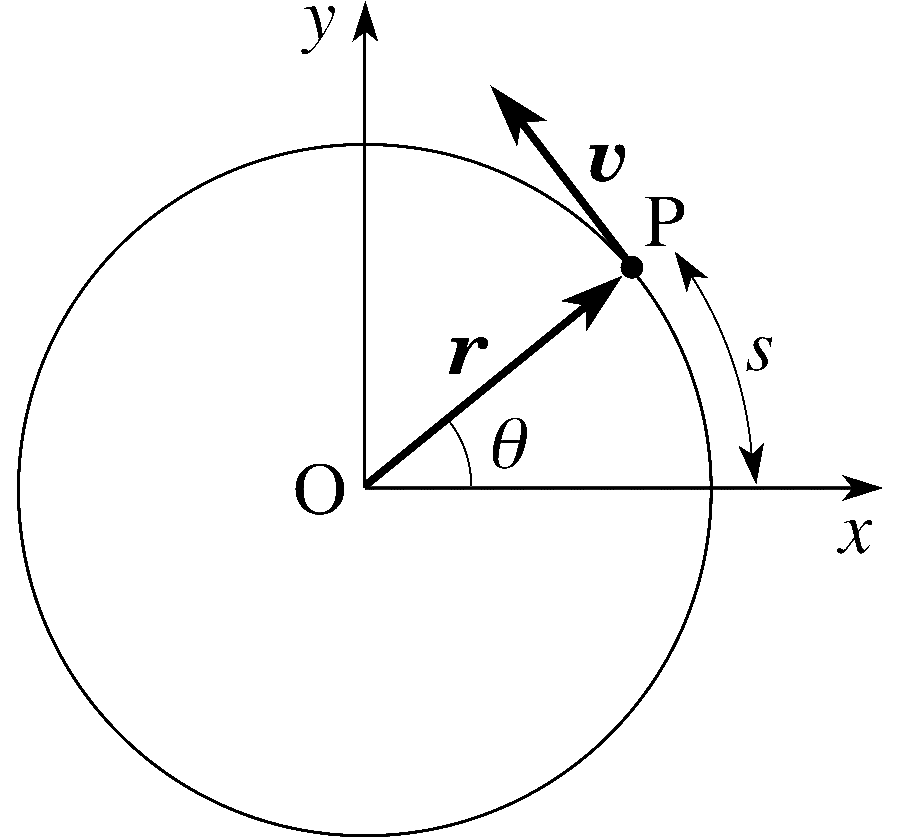
Velocity in physics refers to the vector magnitude that indicates the variation of the position of an object for each unit of time. It is a crucial concept for the study of the kinematics of objects.
What is velocity?
In physics we define velocity as a physical magnitude that expresses the degree of displacement of a body with respect to a point in a given time. This variation is expressed in space, therefore it is a vector value, which indicates a magnitude and a direction.
 There are two types of velocity: average and instantaneous. The first is calculated by dividing the distance covered by the time elapsed, while the instantaneous velocity corresponds to the limit when the time interval tends to zero.
There are two types of velocity: average and instantaneous. The first is calculated by dividing the distance covered by the time elapsed, while the instantaneous velocity corresponds to the limit when the time interval tends to zero.
Units in the international system of units are meters per second (m/s), kilometers per hour (km/h), or miles per hour (mph).
Types of speed
There are different types of velocities that can be classified into various categories depending on the context in which they are applied.
The most relevant types of velocities in the study of kinematics are the following:
Linear velocity
Linear velocity is what measures the distance traveled by an object in a specific direction per unit of time. For example, the speed of a car in kilometers per hour (km/h).
Angular velocity
 Angular velocity refers to the speed of rotation of an object around a point or axis. It is measured in radians per second (rad/s) or degrees per second (°/s).
Angular velocity refers to the speed of rotation of an object around a point or axis. It is measured in radians per second (rad/s) or degrees per second (°/s).
When a body rotates with respect to an axis, the angular velocity ω appears. Angular velocity indicates the variation of angular position over time.
Rotating bodies have two types of speed: angular speed, which indicates the variation of the angle, and tangential speed, which is the linear speed with a tangent direction to the curvature at each moment.
Instant velocity
It is the velocity of an object at a specific point in its trajectory at a given time. Its value may be different from the average velocity.
Average velocity
It is the average velocity of an object during a given time interval. It is calculated by dividing the total distance traveled by the time elapsed.
Relative velocity
It is the velocity of one object in relation to another. It is commonly used in physics to describe the relative motion of two moving objects.
For example, in the case that the passenger of a bus walks down the aisle while it is moving, they have two relative speeds: the speed with respect to that of an observer located inside the bus and that perceived by an observer located on the street.
Terminal velocity
 It is the maximum speed that an object reaches in free fall due to air resistance. Once this speed is reached, the object will not accelerate any further.
It is the maximum speed that an object reaches in free fall due to air resistance. Once this speed is reached, the object will not accelerate any further.
The resistance force exerted by the air on an object in free fall is proportional to the speed of the object. This force increases as the object gains speed due to the acceleration caused by gravity according to Newton's second law. Finally there comes a time when the force of air is balanced by the force of gravity.
Other types of speed
From another more specific point of view, these particular types are also defined:
- Speed of sound: It is the speed at which a sound wave propagates through a medium, such as air or water. In air at room temperature, the speed of sound is approximately 343 meters per second.
- Speed of light: It is the speed at which light travels in a vacuum, which is approximately 299,792,458 meters per second. It is a fundamental constant in modern physics.
- Orbital speed: It is the speed at which an object, such as a satellite, must move to maintain a stable orbit around another celestial body, such as the Earth, so that the force of gravity does not make it fall. In this case, the force of gravity is equal to the centripetal force.
Velocity formulas
Velocity is defined as the change in the position of an object with respect to time.
Linear velocity formula
The formula for the average velocity of an object is:
v = Δx/Δt
Where:
-
v represents velocity.
-
Δx represents the change in position or the distance traveled (the final position vector minus the initial position vector)
-
Δt represents the elapsed time.
Velocity can be negative, which means that the object is moving backwards. It can also be null, which means that the object is not moving.
Angular velocity formula
To calculate the average angular velocity, the following formula is used:
ω = 2π/T
Where,
-
ω is the angular velocity in radians per second
-
T is the period of rotation in seconds (the time it takes for the object to complete one revolution)
-
π is the constant PI.
Difference between velocity and speed
Velocity indicates the variation of the position of an object per unit of time. The variation of the position is determined by the difference of two vectors, therefore, velocity is a vector that indicates the direction of the object.
On the other hand, speed refers to the physical magnitude of velocity regardless of direction. The speed tells us the variation of the distance traveled per unit of time but we do not have any information about the direction and position of the object.
Velocity examples
 Depending on how an object moves or depending on whether it is subjected to acceleration, different types of movements are defined:
Depending on how an object moves or depending on whether it is subjected to acceleration, different types of movements are defined:
-
In uniform rectilinear motion, the object has constant speed and does not change direction.
-
In uniformly accelerated rectilinear motion, the object does not change direction but its speed varies because it is affected by a constant acceleration. In this case, the initial and final speed are different.
-
In uniform circular motion, the object rotates on an axis but is not subjected to any acceleration (neither angular nor tangential).
-
In uniformly accelerated circular motion, the object rotates on an axis and is subjected to a constant acceleration that can be angular or linear.